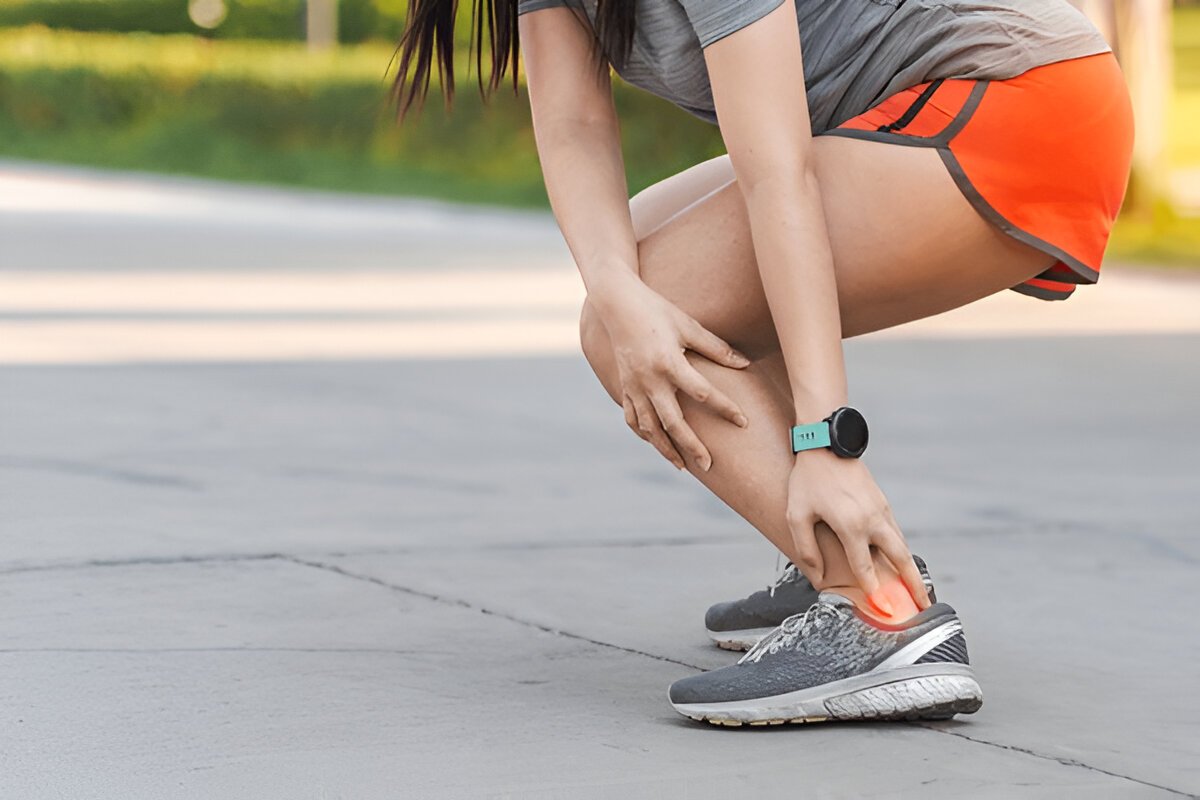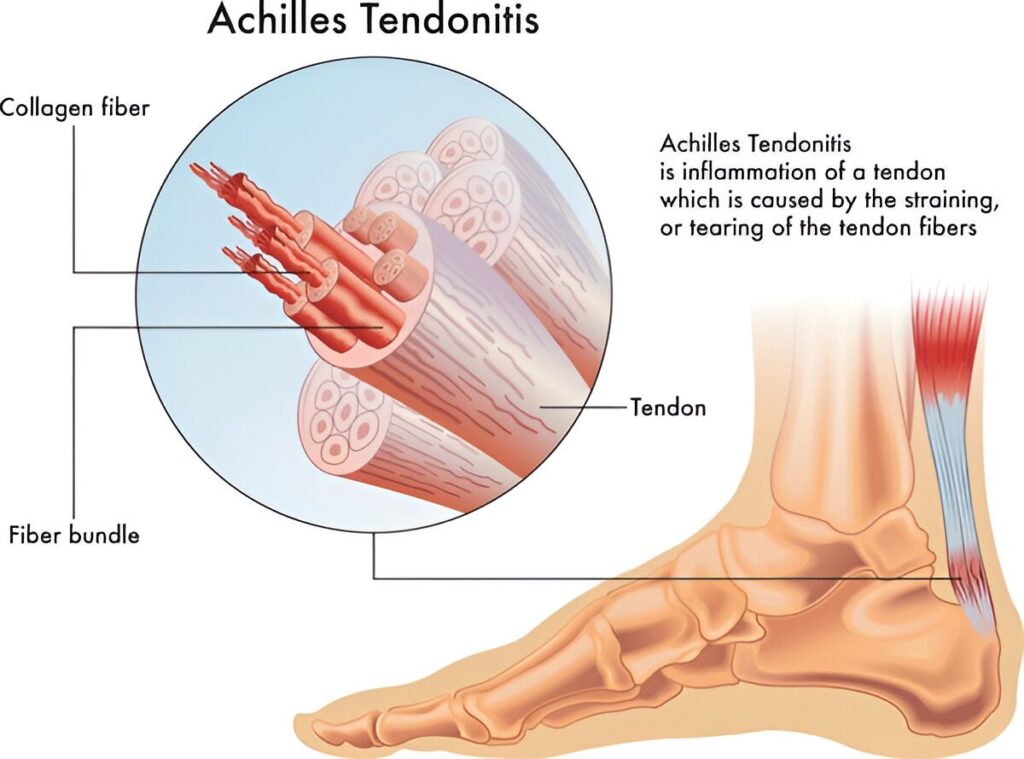
Achilles Tendon Pain: Causes, Symptoms and Effective Physiotherapy Treatments
Achilles tendon pain can sneak into your life without warning. You can jog normally one fine day but be hobbling with pain the next.It is a growing concern for runners, athletes, or anyone who works on their feet for long periods of time. This guide will tell you what causes pain in the Achilles tendon, the warning signs, and physiotherapy techniques that can help in speeding up the healing process and reducing the chances of re-injury.
What happens when you have Achilles tendon pain
The Achilles tendon is the one that links the calf muscles to the heel bone. When that link gets overloaded or irritated, it creates a dull, achy feeling at the back of the ankle or immediate stiffness upon waking up. People often call it Achilles tendon ache, heel pain, or even foot tendonitis but medically, it’s best described as Achilles tendinopathy.
Some of the common causes:
- A sudden hike in activity: Common cause of injury among runners.
- Poor footwear or training terrain: Hard shoes, worn-out cushioning, excessive hill work.
- Muscular imbalances and tight calves: Limits ankle mobility and place extra stress through this tendon.
- Biomechanics: Over-pronation, bad patterns of gait.
- Age, chronic degeneration: Tendons lose their resilience with time.
Typical symptoms
- Pain or stiffness at the ankle with movement, which is often worse in the morning.
- Pain that eases once you warm up but comes back after activity
- A thickened or tender area of the tendon.
- If a sudden pain at the back ankle occurs with an audible pop, it might be a rupture. Best to seek urgent care.
Physiotherapy treatment for Achilles tendon pain

With physiotherapy, they don’t just treat the symptoms, but they find the root cause of your pain a good physiotherapist combines thorough assessment with the right loading strategies, manual therapy, and return-to-activity programming.
At Rapid Physiocare, your treatment may include the following elements:
1.Thorough assessment and gait analysis
Strength, flexibility, and movement patterns will all be assessed to try to find the root cause. Gait analysis assists in spotting compensations that keep the tendon overloaded.
2.Progressive loading and targeted exercise
Evidence shows that progressive loading programmes (eccentric and heavy slow resistance training) are the key treatment for Achilles tendonitis in physical therapy. These exercises builds the tendon capacity safely and pain reduction.
Examples include controlled heel drops, calf raises, and isometric holds, all matched to pain tolerance.
3.Manual therapy and soft tissue work
Hands-on treatment can diminish local tightness and pain, improve ankle mobility during rehabilitation, and supports more effective loading programs.
4.Shockwave therapy
Extracorporeal shockwave therapy is used to stimulate healing in recalcitrant tendon problems, in combination with loading to accelerate recovery.
5.Dry needling and other adjuncts
Dry needling of the tight calf muscles and trigger points can be an adjunct to exercise and load management to improve outcomes.
6.Clinical Pilates and neuromuscular control
Strengthening the kinetic chain (hip, core and ankle) through clinical Pilates helps to take the pressure away from the Achilles, preventing recurring of injury.
7.Footwear advice and orthoses
Simple changes can be made to footwear or orthoses to lessen tendon strain, mostly in cases of over-pronation or insertional pain.
At-home management and exercises you can start
You can begin these guided exercises once your physiotherapist gives you the go-ahead. Some safe starters include:
- Isometric calf holds: Push into a wall or step and hold a mid-range calf contraction for 30–45 seconds; repeat 4–6 times.
- Eccentric heel drops: Stand on a step and rise on both feet; then, slowly lower the heel of the injured side, starting with bodyweight and progressing as tolerated.
- Seated calf raises and towel stretches: For flexibility.
If you have insertional Achilles tendonitis treatment exercises (pain at the tendon heel insertion), the heel drops need to be modified to avoid excessive compression— your physiotherapist will guide you on the safest alternative.
Overview of 8-12 weeks rehab plan (Sample)
- Weeks 0–2: The goal is to reduce pain so to start isometric and gentle ankle stretches and manage load.
- Weeks 3–6: Progress to eccentric and heavy slow resistance Achilles tendonitis exercises.
- Weeks 7–12: Gradually return into to running, plyometrics, and gait retraining.
Example: A runner had to reduce her mileage and followed a tailored loading progressive program alongside clinic treatments. Soon, she returns to running in about 10 weeks.
Practical tips you can apply today
- Exchange shoes if cushioning is worn down.
- Take short walk-rest intervals when returning to running.
- Ankle stretches and calf strength training twice a day.
- Keep a simple log of your pain levels: Before, during and 24 hours post-exercise.
If you are experiencing pain at the back of your ankle or under the ankle bone for more than a week, it is recommended to see a physiotherapist for an assessment. The earlier the treatment intervention the better the chances of long-term, chronic prevention.
Return-to-run and recovery expectations
A question that is commonly asked is, “How long does it take to recover from an Achilles injury?” The honest answer: It varies.
Cases of mild tendinopathy may show improvements within a matter of weeks if rehab is properly followed, while chronic and degenerate cases require more time for healing-in the range of 3 – 6 months. As it involves structured load and activity modifications . Returning too soon, may result in relapse. The return-to-run plan involves gradually increasing the load and tissue adaptation and is closely monitored by a physiotherapist.
When to seek urgent help
- Sudden, sharp pain with a pop and inability to push off is a possible sign of rupture.
- Swelling increasing rapidly or severe bruising.
- Night pain not relieved by conservative care.
If you encounter any of these, please seek immediate clinical assessment.
Final thoughts
Even though Achilles tendon pain can be frustrating but it is treatable given the proper approach. Think of the tendon like a rubber band it can be fray when overstretched repeatedly but with the right gradual loading, it can rebuild its strength back. The most effective plan would be a customised physiotherapy program which involves assessment, progressive loading, specific manual therapy, and return-to-activity planning.
Do not let Achilles tendon pain hold you back from moving freely. At Rapid Physiocare, our expert physiotherapists use evidence-based treatments and personalised rehab programs to help you recover safely and prevent future flare-ups.
Book your consultation today and take the first step towards pain-free movement.
Tags : achilles injury exercises, achilles tendinopathy rehab, achilles tendon pain, achilles tendon physiotherapy, achilles tendonitis treatment, heel pain relief singapore, physiotherapy for runners, sports injury physiotherapy, tendon pain treatment singapore


